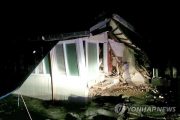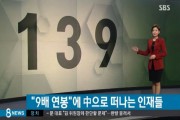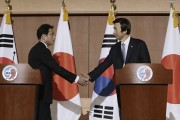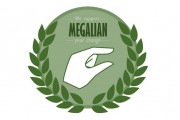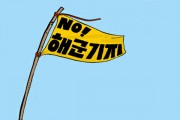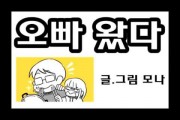Asides from all the usual parades, mass games and rockets that we and the Korean media concentrate on, there are still some normal things going on North of the koreaBANG iron curtain and, just because the DPRK (Democratic People’s Republic of Korea – North Korea) is isolated from the rest of East Asia, doesn’t mean that people there still don’t like to kick back with a bit of manga, or rather manhwa [만화] every now and then (actually, rather than use the term “manhwa” most comic books coming out of Pyongyang are called “gurimchaek” [그림책 lit. “picture book”]).
Comic books are in fact one of the most popular leisure activities in the DPRK and are regularly hired out by bookstores for about 100 won (that’s about $0.04 at the current black market exchange rate or $0.75 at the official exchange rate) where those who don’t have the time, or indeed money to actually buy the latest issue, can stand and read them on the spot.
In line with the common themes found within North Korean film and media, the most popular North Korean comic books seem to be spy or military thriller titles such as “Special Operations” or “Defend the Citadel” that see Pyongyang’s finest special agents skilfully worm their way into the deepest corners of US or Japanese government agencies and thwart the imperialist aims that threaten stability on the Korean peninsula. Continuing the military theme, some books are said to be based on the diaries of heroic revolutionaries that allegedly fought alongside Kim Il Sung during his days as a guerilla general.

Others, however, deal with history or Korean fables and legends. Among them is a series of books dubbed the “Dangun Series” –– an attempt to represent in great detail the story of Dangun, the mythical founding King of the first Korean kingdom who was related to a she-bear on his Mother’s side and a god on his Father’s.
The Dangun legend is just that, a legend. As a popular folktale, it is a story well-known by most Koreans on both sides of the 38th parallel, a sort of nativity fable that everyone at least has a rough idea of but doesn’t necessarily believe. However, one crucial aspect of the North’s story that does not line up with the rhetoric in the South is this: according to North Korean sources, Dangun was not only real, his remains are buried just outside Pyongyang after being discovered on order of Kim Il Sung in the early 1990s (Pyongyang being where Dangun is supposed to have lived shortly after founding his first kingdom).
The North’s version of events is said to give Pyongyang a bit of historical legitimacy over the South’s capital, regardless of the fact that both North and South Korea entrenched Seoul as their official capital cities in their constitutions immediately after division.
The below series of images are taken straight from a North Korean comic book that was bought by a koreaBANG agent in a Kaesong bookshop on the Northern half of the peninsula. We’ve used mythical legend and spell-binding wizardry to replace the original Korean with our translation. Most of the story is the same, as the fable goes, except for the last cell which wastes no time in thanking the Great Leader for finding Dangun’s bones.
From Korean Publications:
